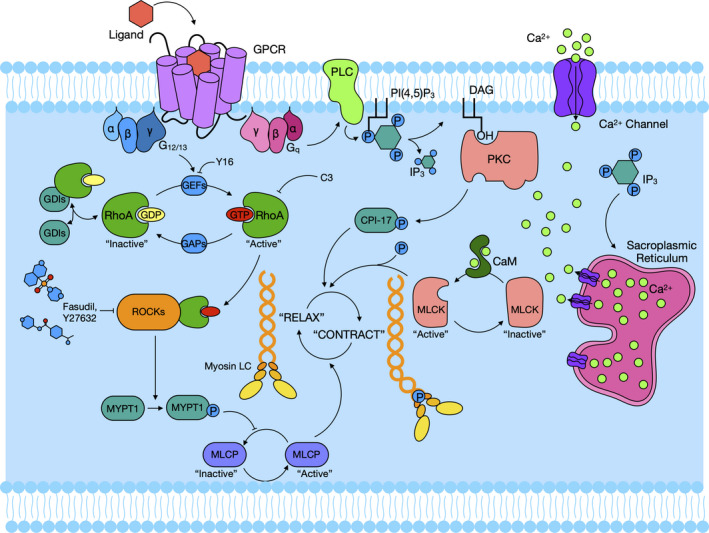Figure 1.

RhoA/Rho‐kinase signalling activation. Upon stimulation by a G protein‐coupled receptor (GPCR) agonist, inactive GDP‐bound RhoA (GDP‐RhoA) is converted into its active state, GTP‐bound RhoA (GTP‐RhoA), by guanine nucleotide exchange factors (GEFs). In turn, activated GTP‐RhoA can also be converted into inactivated GDP‐RhoA y GTPase‐activating proteins (GAPs). Rho‐kinases can lead to the phosphorylation of myosin phosphatase targeting subunit 1 (MYPT1) and exert an inhibitory effect on myosin light chain phosphatase (MLCP) that induces smooth muscle relaxation by the removal of the phosphate on myosin light chain (MLC). The GTP‐bound α subunit of the αβγ holomer dissociates and activates phospholipase C (PLC) increasing intracellular calcium levels via the activity of inositol 1,4,5‐triphosphate (IP3) and diacylglycerol (DAG). IP3 interacts with specific receptors on the sarcoplasmic reticulum leading to an increased cellular Ca2+ concentration and subsequently activation of myosin light chain kinase (MLCK) through calmodulin (CaM). CPI‐17 is an inhibitor protein for MLCP and can be activated by protein kinase C (PKC) and promote MLC phosphorylation.
